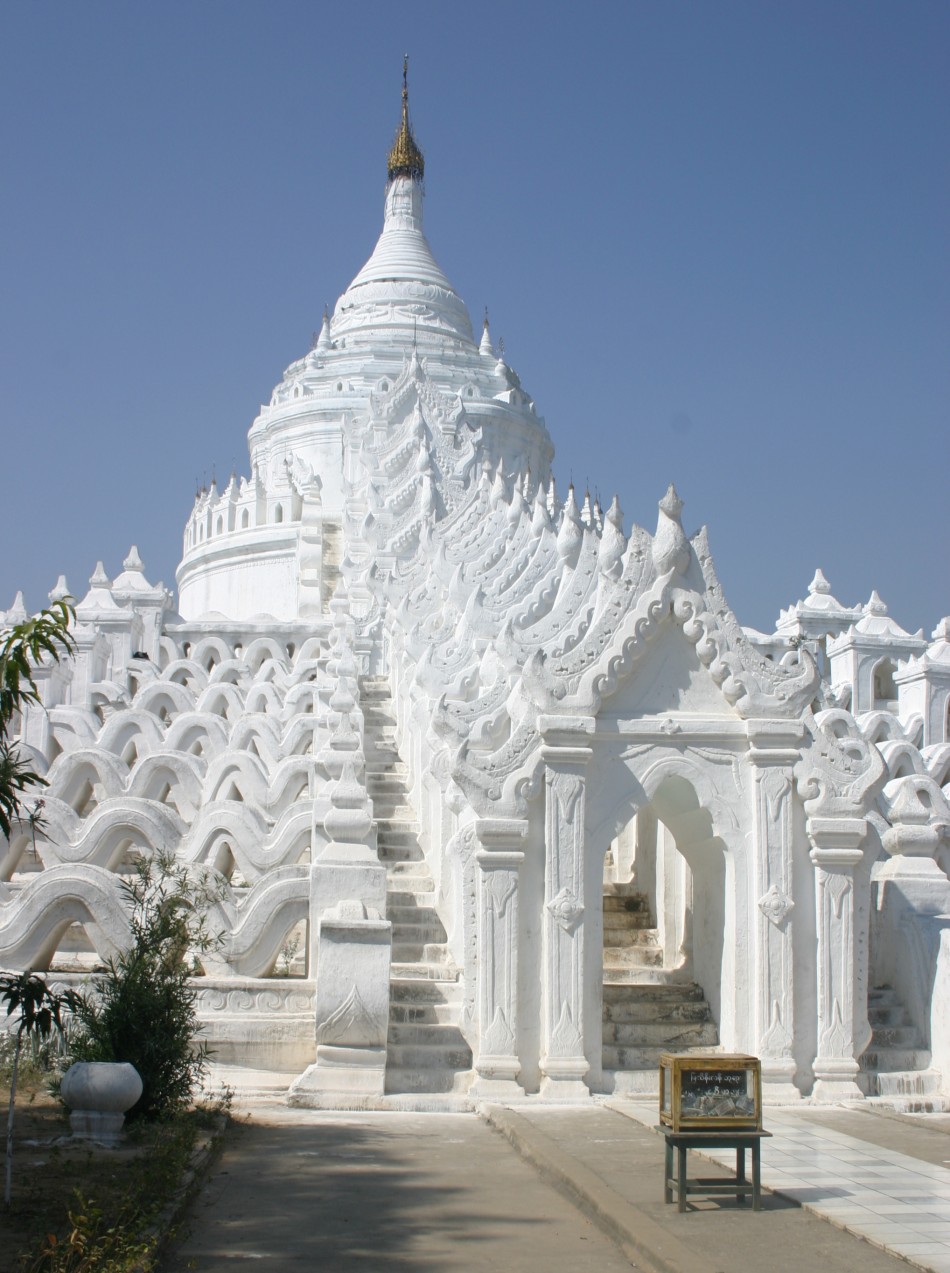Hsinbyume-Pagoda, Mingun, Myamar. CC BY-SA Gerd Eichmann
According to this source:
It’s designer presents the Buddhist cosmology Sulamani Pagoda on the Legendary Mount Meru in Tavatimsa, the Celestial abode of the chief spirit, Indra. Seven concentric terraces represent seven mountain ranges going up to the Mount Meru.
According to Le Huu Phuoc’s Buddhist Architecture (p. 220):
Mount Sumeru {Dumarcay 1986: 89-91}{Chihara 1996: 25-26}
This clichéd idea has been around for a long time in which the concept of Mount Meru (Hindu) or Mount Sumeru (Buddhist) represents a cosmic mountain that has four summits surrounding a central one; in the base is the seven circular mountain chains separated by seven oceans and beyond the seventh ocean in the eighth ocean is Jambudvipa with Lake Anavatpa in its center. Another slightly different version of the Mount Meru myth is that it rises in the center of Jambudvipa with the gods inhabiting its slopes and summits according to their proper ranks.
- L. H. Phuoc, Bhuddist Architecture, Grafikol, 2010.
[Bibtex]@Book{Phuoc2010, title = {Bhuddist Architecture}, publisher = {Grafikol}, year = {2010}, author = {Le Huu Phuoc}, month = {may}, note = {The volume thoroughly examines the origins and principal types of Buddhist architecture in Asia primarily between the third century BCE-twelfth century CE with an emphasis on India. It aims to construct shared architectural traits and patterns alongwith the derivative relationships between Indian and Asian Buddhist monuments. It also discusses the historical antecedents in the Indus Civilization and the religious and philosophical foundations of the three schools of Buddhism and its founder, Buddha. Previously obscure topics such as Aniconic and Vajrayana (Tantric) architecture and the four holiest sites of Buddhism will also be covered in this comprehensive volume. The author further investigates the influences of Buddhist architecture upon Islamic, Christian, and Hindu architecture that have been overlooked by past scholars.}, author_sort = {Phuoc, Le Huu}, calibreid = {110}, cover = {/home/trismegisto/Calibre Library/Le Huu Phuoc/Bhuddist Architecture (110)/cover.jpg}, file = {Phuoc2010.pdf:media/trismegisto/Vitamin/Documents/Bibliography/Phuoc2010.pdf:PDF}, formats = {pdf}, identifiers = {isbn:0984404309}, isbn = {09-8440-430-9}, keywords = {Architecture, Religion, History, Science, Sacred Writings, Symbolism}, languages = {eng}, library_name = {Calibre Library}, size = {21433008 octets}, tags = {Architecture, Religion, History, Science, Sacred Writings, Symbolism}, timestamp = {2015-03-15}, title_sort = {Bhuddist Architecture}, uuid = {1aef66b7-502b-4fb6-a6fa-6feafce9c215} }




